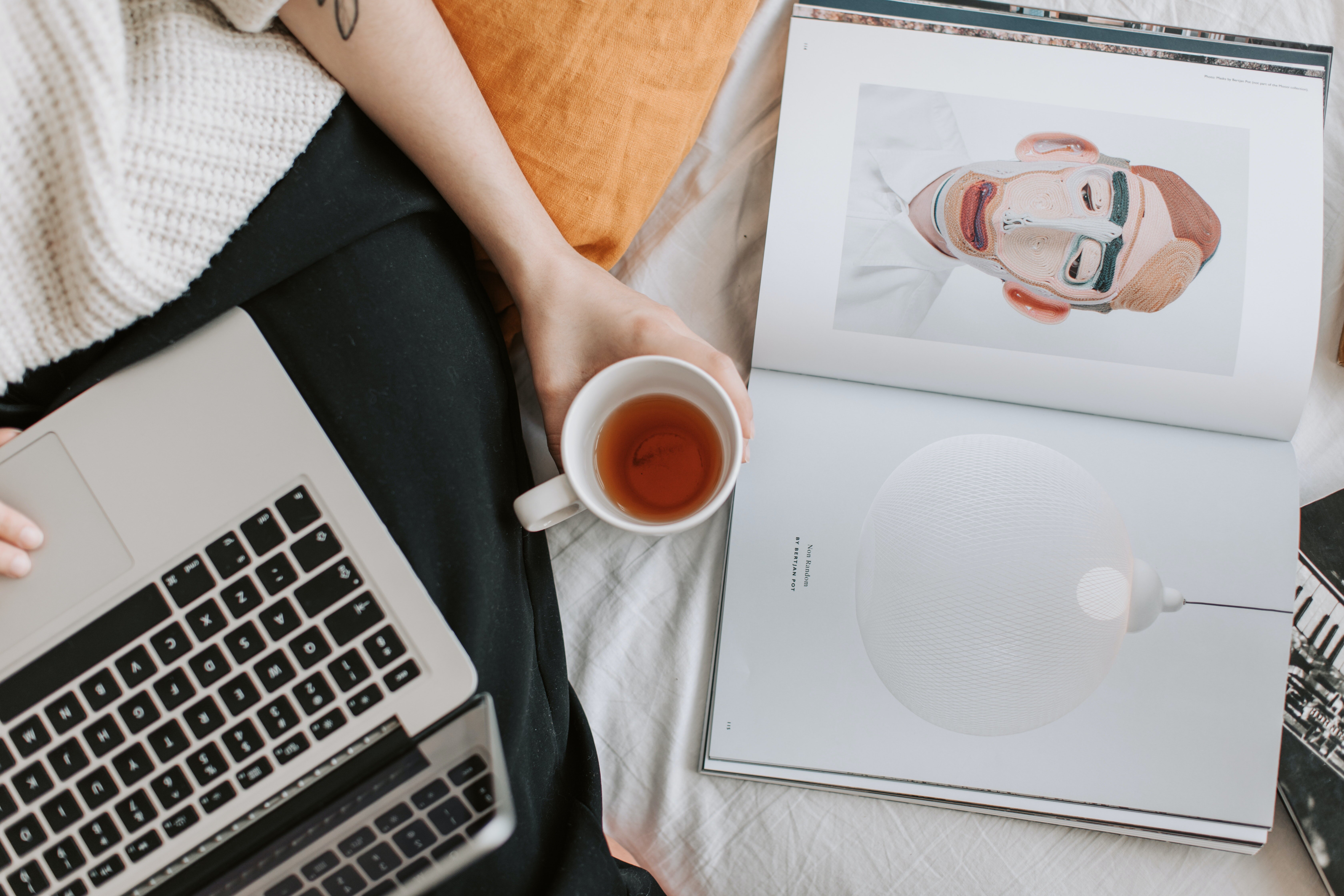Table of Contents
- Introduction
- The Importance of an Artist Portfolio
- The Rise of Digital Art Portfolio Websites
- How to Make a Digital Art Portfolio?
- SEO Strategies for Artist Portfolio Websites
- Online Art Portfolio: Increasing Visibility with SEO
- How to Use Portfoliobox for Your Artwork Online Portfolio?
- Proven SEO Strategies for Boosting Your Art Portfolio on Portfoliobox
- Conclusion and Next Steps for Your Art Portfolio SEO Strategy

Introduction
An artist's portfolio is a collection of an artist's work, showcasing their skills, creativity, and versatility in their craft. It may feature a variety of pieces from different mediums, illustrating their broad range of abilities. In the past, these portfolios were physical copies, often presented in a portfolio case or book. However, with the advent of digital technology, the art portfolio has transcended into a digital realm, opening up new opportunities for artists to showcase their work to a global audience.
The digital art portfolio, commonly known as an artist portfolio website, has become an essential tool for artists in today's digital age. It provides a platform for artists to exhibit their work online, reaching a wider audience than a traditional portfolio. However, having an online portfolio is just the first step; making it visible to the right audience is equally crucial. That's where Search Engine Optimization, or SEO, comes in.
SEO is a digital marketing strategy that focuses on improving a website's visibility in search engine results. It involves optimizing a website's content, design, and architecture to make it more attractive to search engines. By implementing effective SEO strategies, artists can significantly increase the visibility of their art portfolio website, attracting more viewers and potential clients.
The Importance of an Artist Portfolio
An artist portfolio is more than just a collection of artwork; it is a representation of an artist's journey, growth, and identity. It showcases an artist's unique style and perspective, providing insight into their thought process and creative approach. A well-curated artist portfolio can open doors to numerous opportunities, from gallery exhibitions to freelance projects and even full-time employment.
Moreover, an artist portfolio plays a critical role in establishing an artist's online presence. In today's digital age, having an online presence is crucial for artists. It provides a platform for them to connect with their audience, share their work, and build their brand. An artist portfolio website serves as a digital gallery, providing viewers with an immersive and interactive experience of the artist's work.
However, the importance of an artist portfolio extends beyond showcasing artwork. It also serves as a marketing tool, helping artists promote their work and attract potential clients. By optimizing their portfolio for search engines, artists can significantly increase their online visibility, attracting more viewers and potential clients.
The Rise of Digital Art Portfolio Websites
Digital art portfolio websites have revolutionized the way artists showcase their work. They provide a platform for artists to exhibit their work to a global audience, breaking down geographical barriers. Furthermore, digital portfolios are more accessible, allowing viewers to explore an artist's work at their own pace and convenience.
The rise of digital art portfolio websites can be attributed to several factors. First, the increasing accessibility of the internet has made it easier for artists to create and manage their own websites. Second, the advent of social media has made it possible for artists to share their work with a wider audience, increasing their online visibility. Finally, the rise of online art marketplaces has opened up new opportunities for artists to sell their work directly to buyers, bypassing traditional galleries and agents.
However, creating a digital art portfolio is just the first step. To truly leverage the benefits of an online portfolio, artists must also focus on optimizing their website for search engines. This involves implementing a variety of SEO strategies, from keyword optimization to link building and content marketing.
How to Make a Digital Art Portfolio?
Creating a digital art portfolio may seem daunting, but with the right approach, it can be a rewarding process. The first step is to select the artwork to be included in the portfolio. This should be a careful selection of the artist's best work, showcasing their range of skills and creative vision. The artwork should be high quality, professionally photographed, and accurately represent the artist's work.
Once the artwork is selected, the next step is to choose a platform for the portfolio. There are several online platforms available, each with their own set of features and benefits. Some platforms, like Portfoliobox, are specifically designed for artists, offering customizable templates and intuitive design tools.
After selecting a platform, the artist can start designing their portfolio. This involves arranging the artwork in a visually pleasing manner, creating a cohesive and engaging layout. The portfolio should also include an artist statement, biography, and contact information, providing viewers with more insight into the artist's background and creative process.
Finally, once the portfolio is complete, the artist must focus on optimizing it for search engines. This involves implementing various SEO strategies, such as keyword optimization, link building, and content marketing.

SEO Strategies for Artist Portfolio Websites
SEO plays a crucial role in increasing the visibility of an artist portfolio website. By optimizing their website for search engines, artists can improve their website's ranking in search engine results, attracting more viewers and potential clients. There are several SEO strategies that artists can implement to boost their portfolio's online visibility.
One effective strategy is keyword optimization. This involves researching relevant keywords related to the artist's work and incorporating them into the website's content, meta tags, and URLs. By using relevant keywords, artists can help search engines understand their content, improving their website's visibility in relevant search results.
Another important SEO strategy is link building. This involves acquiring backlinks from other reputable websites, which can improve a website's credibility and ranking in search engine results. Artists can acquire backlinks by collaborating with other artists, participating in online art communities, and submitting their work to online art directories.
Content marketing is also a powerful SEO strategy. This involves creating valuable content related to the artist's work, such as blog posts, tutorials, and behind-the-scenes videos. By providing valuable content, artists can attract more viewers to their website, increase their engagement, and improve their website's ranking in search engine results.
Online Art Portfolio: Increasing Visibility with SEO
SEO is an essential tool for increasing the visibility of an online art portfolio. By implementing effective SEO strategies, artists can improve their website's ranking in search engine results, attracting more viewers and potential clients. However, SEO is not a one-time task; it requires continuous effort and monitoring.
One way to monitor the performance of an SEO strategy is through analytics. Most website platforms provide analytics tools that allow artists to track their website's traffic, engagement, and conversion rates. By analyzing this data, artists can gain insight into their audience's behavior, identify potential areas for improvement, and adjust their SEO strategies accordingly.
Another way to increase the visibility of an online art portfolio is through social media. Social media platforms provide a powerful platform for artists to share their work, connect with their audience, and drive traffic to their website. By sharing their portfolio on social media, artists can increase their online visibility, attract more viewers, and improve their website's ranking in search engine results.
Finally, artists should also consider investing in paid advertising. Platforms like Google AdWords and Facebook Ads allow artists to target specific audiences, increasing their website's visibility to potential clients. While paid advertising requires an investment, it can be a powerful tool for boosting an online art portfolio's visibility.
How to Use Portfoliobox for Your Artwork Online Portfolio?
Portfoliobox is a popular platform for creating an artwork online portfolio. It offers a variety of customizable templates, intuitive design tools, and advanced SEO features, making it an excellent choice for artists. Here's how to use Portfoliobox for your artwork online portfolio.
First, sign up for a Portfoliobox account. Once you have an account, you can start creating your portfolio. Choose a template that suits your style, and start adding your artwork. You can upload high-resolution images of your artwork, arrange them in a visually pleasing layout, and add descriptions and details for each piece.
Next, customize your portfolio design. Portfoliobox offers a variety of design tools that allow you to customize your portfolio's layout, colors, fonts, and more. Make sure to create a cohesive and engaging design that reflects your artistic style.
Once your portfolio is complete, you can start optimizing it for search engines. Portfoliobox offers advanced SEO features, such as customizable meta tags, URL structure, and sitemap. Use these features to optimize your portfolio for relevant keywords, build backlinks, and improve your website's visibility in search engine results.
Finally, share your portfolio on social media. Portfoliobox integrates with various social media platforms, allowing you to easily share your portfolio with your audience and drive traffic to your website.
Proven SEO Strategies for Boosting Your Art Portfolio on Portfoliobox
To boost your art portfolio on Portfoliobox, it's crucial to implement proven SEO strategies. Here are some strategies that can help increase your portfolio's visibility.
First, optimize your portfolio for relevant keywords. Research relevant keywords related to your artwork, and incorporate them into your portfolio's content, meta tags, and URLs. This will help search engines understand your content, improving your portfolio's visibility in relevant search results.
Second, build backlinks to your portfolio. Collaborate with other artists, participate in online art communities, and submit your work to online art directories to acquire backlinks. This will improve your portfolio's credibility and ranking in search engine results.
Third, provide valuable content. Create blog posts, tutorials, and behind-the-scenes videos related to your artwork. This will attract more viewers to your portfolio, increase their engagement, and improve your portfolio's ranking in search engine results.
Finally, monitor your SEO performance. Use Portfoliobox's analytics tools to track your portfolio's traffic, engagement, and conversion rates. Analyze this data to gain insight into your audience's behavior, identify potential areas for improvement, and adjust your SEO strategies accordingly.

Conclusion and Next Steps for Your Art Portfolio SEO Strategy
In conclusion, SEO is an essential tool for boosting the visibility of an art portfolio. By implementing effective SEO strategies, artists can increase their online presence, attract more viewers, and open up new opportunities. While SEO may seem daunting, with the right approach, it can be a rewarding process.
As a next step, consider evaluating your current art portfolio and identifying areas for improvement. Research relevant keywords, build backlinks, provide valuable content, and monitor your SEO performance. Remember, SEO is a continuous process; it requires ongoing effort and monitoring.
Whether you're creating a new art portfolio or optimizing an existing one, remember the importance of SEO. With a well-optimized art portfolio, you can showcase your work to a wider audience, connect with potential clients, and take your art career to new heights.












